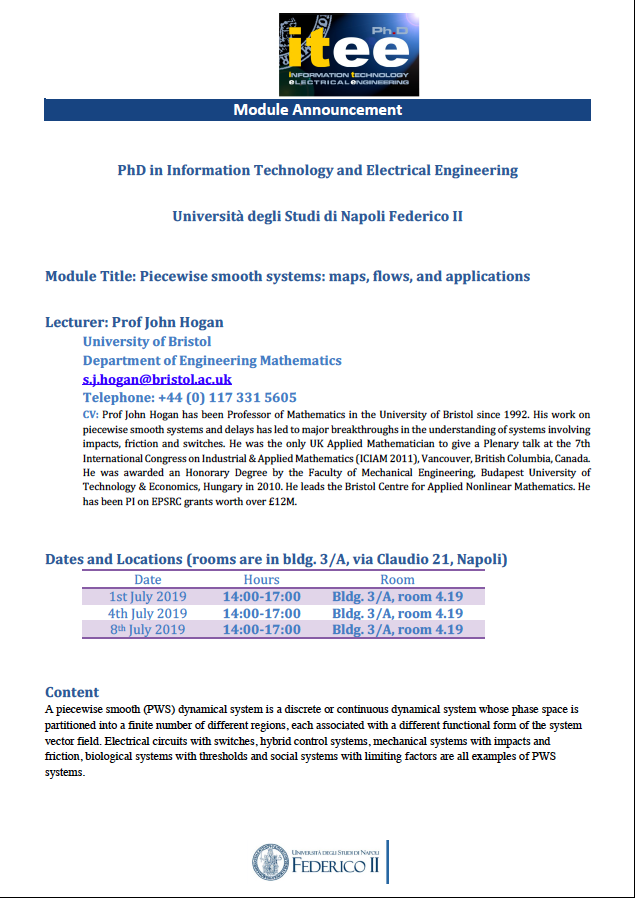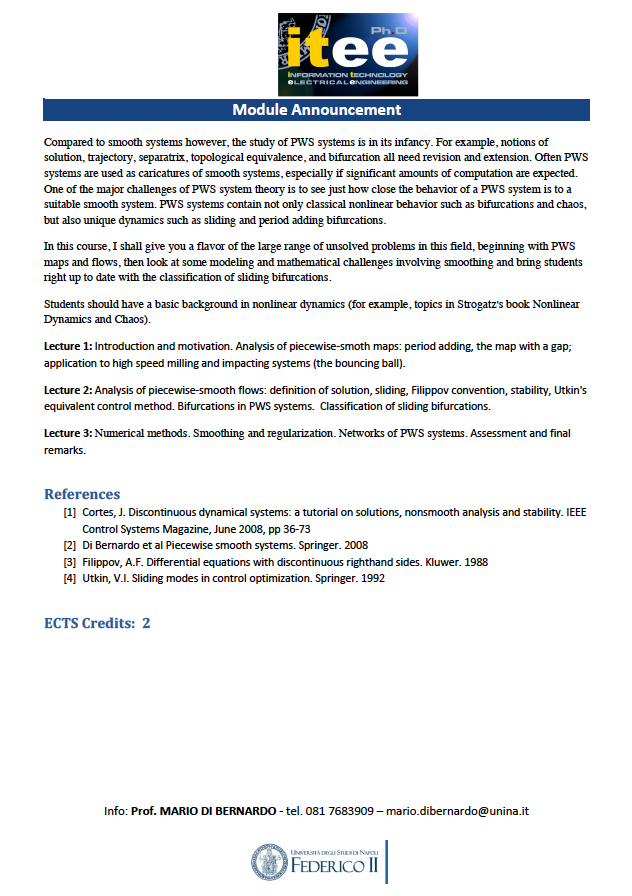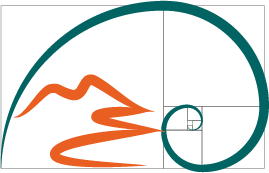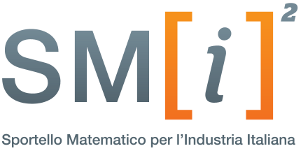
Ph.D. Course
"Piecewise smooth systems: maps, flows and applications"
Prof. John Hogan
PhD in INFORMATION TECHNOLOGY AND ELETRICAL ENGINEERING
Prof. John Hogan, University of Bristol, Department of Engineering Mathematics, will give a course entitled:
“Piecewise smooth systems: maps, flows, and applications”
Dates and Locations (rooms are in bldg. 3/A, via Claudio 21, Napoli)
1st July 2019, 14:00-17:00, Bldg. 3/A, room 4.19
4th July 2019, 14:00-17:00, Bldg. 3/A, room 4.19
8th July 2019, 14:00-17:00, Bldg. 3/A, room 4.19
CONTENT
A piecewise smooth (PWS) dynamical system is a discrete or continuous dynamical system whose phase space is partitioned into a finite number of different regions, each associated with a different functional form of the system. Electrical circuits with switches, hybrid control systems, mechanical systems with impacts and friction, biological systems with thresholds and social systems with limiting factors are all examples of PWS systems.
vector field.
Compared to smooth systems however, the study of PWS systems is in its infancy. For example, notions of solution, trajectory, separatrix, topological equivalence, and bifurcation all need revision and extension. Often PWS systems are used as caricatures of smooth systems, especially if significant amounts of computation are expected. One of the major challenges of PWS system theory is to see just how close the behavior of a PWS system is to a suitable smooth system. PWS systems contain not only classical nonlinear behavior such as bifurcations and chaos, but also unique dynamics such as sliding and period adding bifurcations.
In this course, I shall give you a flavor of the large range of unsolved problems in this field, beginning with PWS maps and flows, then look at some modeling and mathematical challenges involving smoothing and bring students right up to date with the classification of sliding bifurcations.
Students should have a basic background in nonlinear dynamics (for example, topics in Strogatz's book Nonlinear Dynamics and Chaos).
LECTURE 1: Introduction and motivation. Analysis of piecewise-smoth maps: period adding, the map with a gap; application to high speed milling and impacting systems (the bouncing ball).
LECTURE 2: Analysis of piecewise-smooth flows: definition of solution, sliding, Filippov convention, stability, Utkin's equivalent control method. Bifurcations in PWS systems. Classification of sliding bifurcations.
LECTURE 3: Numerical methods. Smoothing and regularization. Networks of PWS systems. Assessment and final remarks.
References
[1]Cortes,J.Discontinuousdynamicalsystems:atutorialonsolutions,nonsmoothanalysisandstability.IEEE Control Systems Magazine, June 2008, pp 36-73
[2] DiBernardoetalPiecewisesmoothsystems.Springer.2008
[3]Filippov,A.F.Differentialequationswithdiscontinuousrighthandsides.Kluwer.1988
[4] Utkin,V.I.Slidingmodesincontroloptimization.Springer.1992
ECTS Credits: 2






